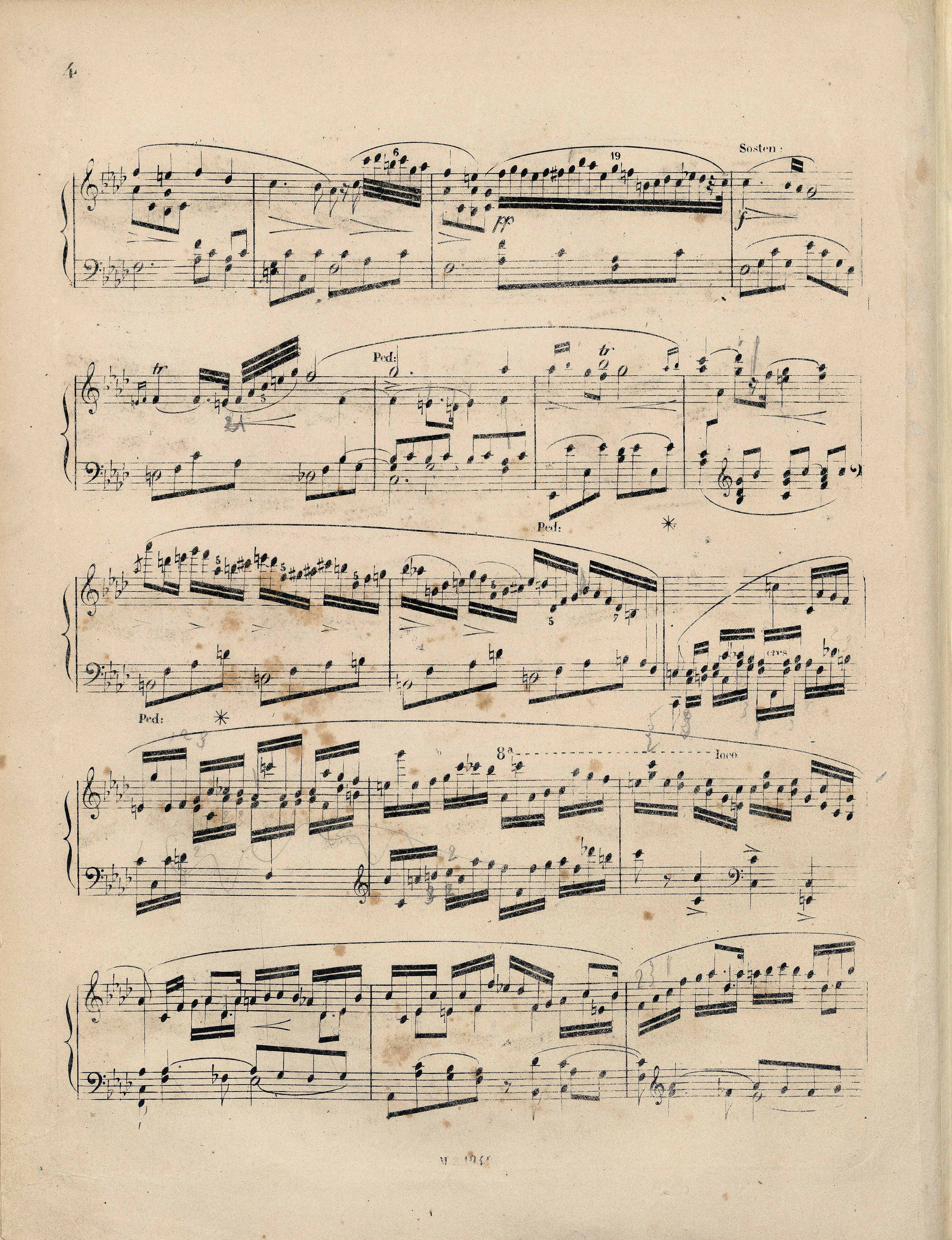Op. 2, Variations in B♭ major
Op. 10, 12 Etudes
Op. 11, Concerto in E minor
Op. 21, Concerto in F minor
Op. 22, Polonaise in E♭ major
Op. 24, 4 Mazurkas
Op. 25, 12 Etudes
Op. 26, 2 Polonaises
Op. 27, 2 Nocturnes
Op. 28, 24 Preludes
Op. 30, 4 Mazurkas
Op. 35, Sonata in B♭ minor
Op. 50, 3 Mazurkas
Op. 63, 3 Mazurkas
Op. 64, 3 Waltzes
(Op. 4), Sonata in C minor




Op. 21, Concerto in F minor, Mvt I
The sign added in FED over the g2-d 3 quaver probably means staccato, which is indicated by the vertical line separating this quaver from the next semiquaver. The sign looks like a wedge, however, one has to remember that Chopin teaching entries are often careless and they usually deviate from the standard forms of signs. Moreover, the line, doubling the function of the rest, proves that the aim of the entries was most probably a correction of an erroneous performance; in addition, this kind of corrective entries are sometimes exaggerated. Due to this reason, in the main text we suggest a milder version of staccato.
3 quaver probably means staccato, which is indicated by the vertical line separating this quaver from the next semiquaver. The sign looks like a wedge, however, one has to remember that Chopin teaching entries are often careless and they usually deviate from the standard forms of signs. Moreover, the line, doubling the function of the rest, proves that the aim of the entries was most probably a correction of an erroneous performance; in addition, this kind of corrective entries are sometimes exaggerated. Due to this reason, in the main text we suggest a milder version of staccato.
Compare the passage in the sources »
category imprint: Graphic ambiguousness; Differences between sources
issues: Annotations in teaching copies, Annotations in FED
notation: Articulation, Accents, Hairpins

